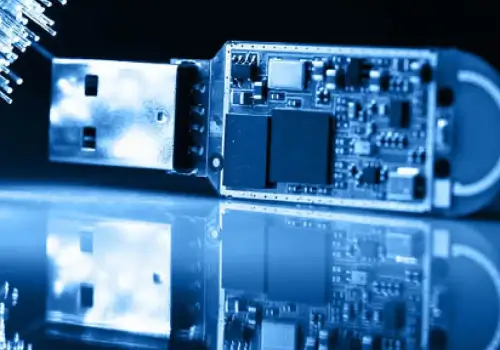
How Does a Flash Drive Work
A flash drive stores data using flash memory. Flash memory uses an electrically erasable programmable read-only (EEPROM) format to store and retrieve data. Flash drives operate in a similar fashion as conventional hard drives. Flash drives are non-volatile, which means they do not need a battery backup. Computer users may choose to use flash memory as an option for the easy storage and transfer of data.
Flash drives are an option for the easy storage and transfer of data.
How Does a Flash Drive Work On Personal Computers (PCs)?
Most computers come equipped with USB ports, which detect inserted flash drives and install the necessary drivers to make the data retrievable. Computer users can store and retrieve data once the operating system has detected a connection to the USB port. After the computer user has finished using the flash drive, he or she must then properly eject the device to safely remove it. The operating system prompts the user when it is safe to remove the flash drive from the USB port.
A flash drive has many components that make it operational. For instance, it has a printed circuit board (PCB) covered in a durable casing made of plastic or rubber. A USB connector protrudes from one end of the flash drive. Computer users connect this side of the flash drive to the USB port receptacle. Most flash drives come equipped with a type-A USB connection to make them compatible with standard receptacles.
Flash drives have a USB mass storage device classification, which means they do not require additional drivers. The computer's operating system recognizes a block-structured logical unit, which means it can use any file system or block addressing system to read the information on the flash drive. A flash drive enters emulation mode, or acts a hard drive, once it has connected to the USB port. This makes it easier to transfer data between the flash drive and the computer.
How Does a Flash Drive Work On Lightweight Operating Systems?
Flash drives are commonly used to operate lightweight operating systems, which may be used to turn personal computers (PCs) into networking devices. In these cases, the flash drive contains the operating system for booting purposes. Flash drives have an added advantage over CDs and floppy disks, which have also been used to boot operating systems. For instance, their low-power consumption and low failure rates make them suitable for networking. In addition, flash drives are smaller in size and more portable than their counterparts. They also do not require special training to use. Lastly, they have larger memory capacity than CDs and floppy disks.
How Does a Flash Drive Work On Your Computer?
Computer users can use a flash drive easily. The first step involves locating the USB port on your computer. It can be found on the back of the computer. The next step involves connecting the flash drive to the USB port. Find the protruding flash drive connector and then plug it into the USB port. The operating system will recognize the flash drive as another hard drive. In fact, it can be easily seen as another device under 'My Computer' in Windows operating systems. No special device drivers or file system are required. Double-click on the icon corresponding with the hard drive and begin saving data. It is that easy.
Secure Data Recovery Services employs certified and professional specialists who can repair and recover data on flash media devices. Our nationwide facilities come equipped with state-of-the-art technology that allows our engineers to work safely on all flash media devices. We boast a 96-percent success rate, making our services a safe bet when it comes to salvaging lost data. Flash media advanced significantly over the last decade, making them a vital storage device for portable media. We provide consistent, reliable results that remain unparalleled by our competitors. Contact us at 800-388-1266 or through our e-mail support online for a free quote on same-day diagnostics for your flash drive media device.
